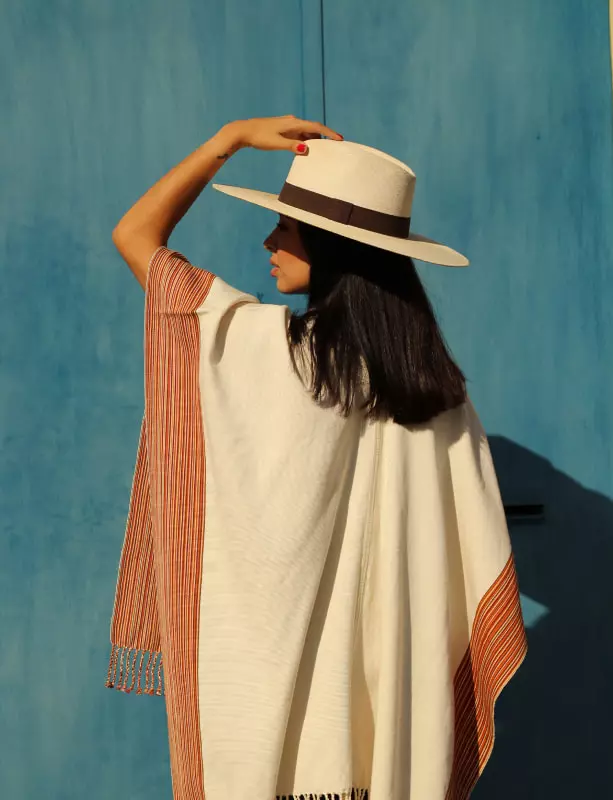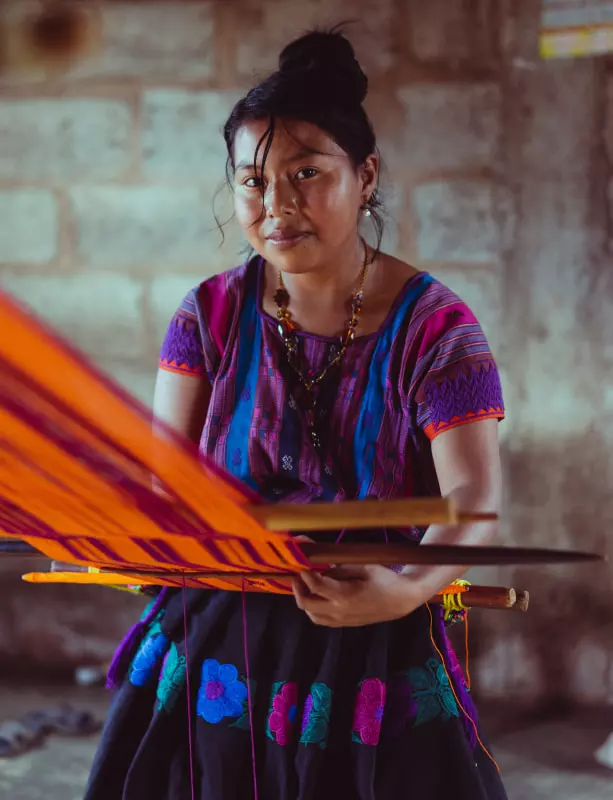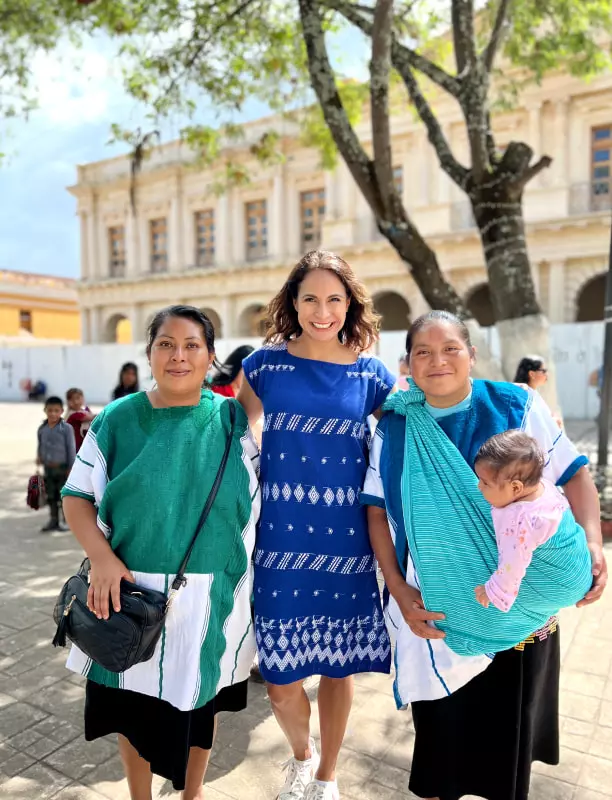
Our Products
Our luxury brand is inspired by nature.
Each piece takes inspiration from the colors, textures
and landscapes of our beloved Mexico.
Ready to Wear
We are proud to say that each of our garments is handmade throughout
the entire process, using an ancient technique and tool called the backstrap loom.
The technique works by attaching the warp to the artisan’s hip at one end and attaching the other side to a solid object such as a tree or pole at the other. After each panel is woven, it is hand stitched together, washed, and sun-dried to ensure the color and size will not change.
An artisan can take anywhere from one to two weeks to make each garment, depending on the measurements or complexity of the piece
Adding brocade to the design can increase the weaving time anywhere from three to six weeks, depending on the intricacy of the brocade.
This is because the brocade is woven individually onto the loom simultaneously while they’re weaving.
The artisan carefully integrates a separate threaded design with each passing of the weft, creating a slightly raised arrangement on the surface
of the fabric. You can see some examples of weft-brocading
in the photos below.
To help reduce our impact on the environment, we only use
non-synthetic fibers.

Hand Fan
Our fans are made with Jipijapa Palm leaves and are woven with a technique that has been added to UNESCO’s list of Intangible Cultural Heritage.
To make the hand fans, the Jipijapa Palm leaves are usually harvested from the palm every two months. After collection, the process begins when the artisan scrapes the palm with a needle to remove the threads from its leaves and create strips within the leaf while still whole.
Once the leaves are brushed, they hang the palm in a heated drying hut to dehydrate the plant until the leaves turn a natural ivory color. To add colors, the artisans use naturally produced dyes from a wide variety of locally found ingredients derived from plants and insects.
The palm is then dried in the sun for several days. After drying, the artisan brings the palm to a makeshift enclosure to begin the weaving process. The moisture created inside the enclosure creates pliability and allows the palm to be flexible enough to weave into its final shape. At the end of the process, they add the wooden caoba handle, which is made from trees that are commonly found in the state of Campeche.




